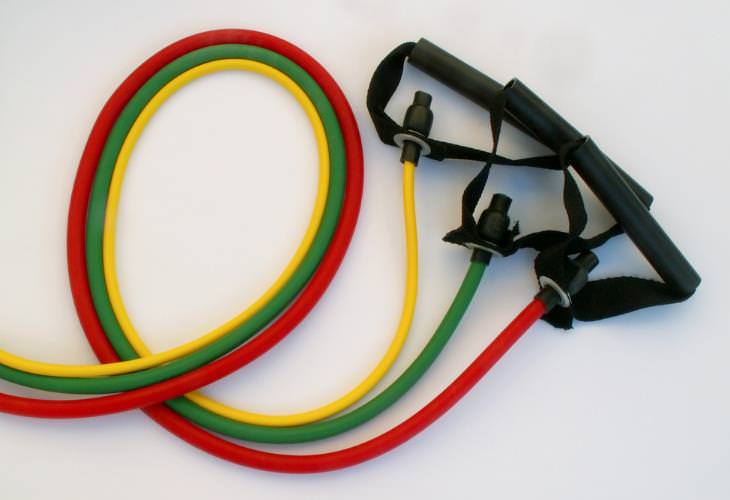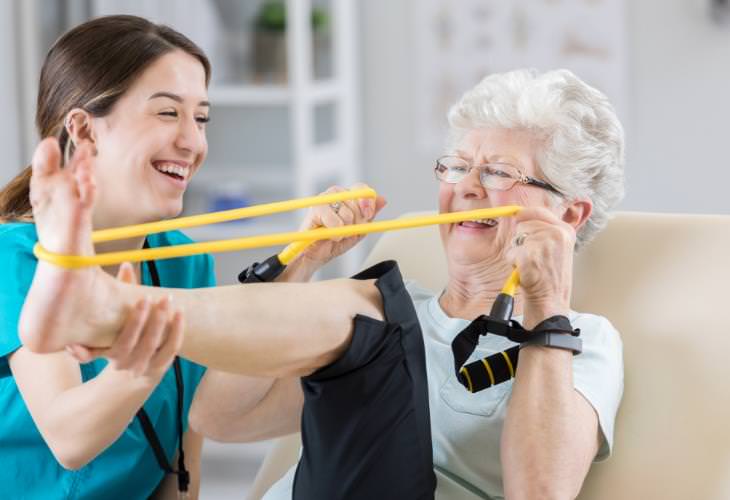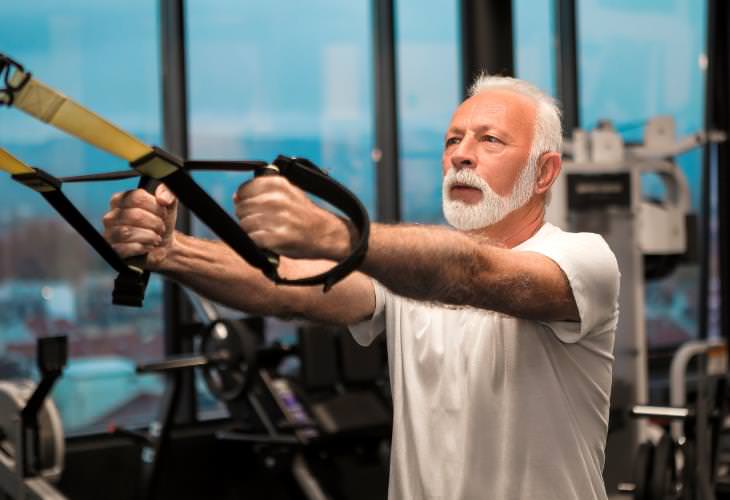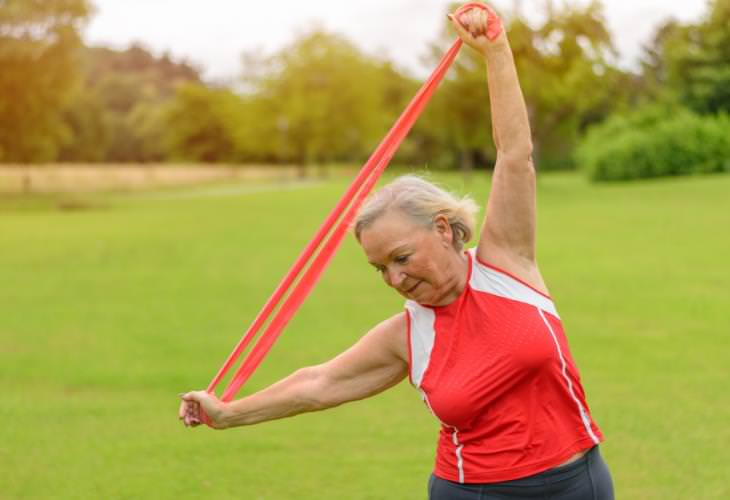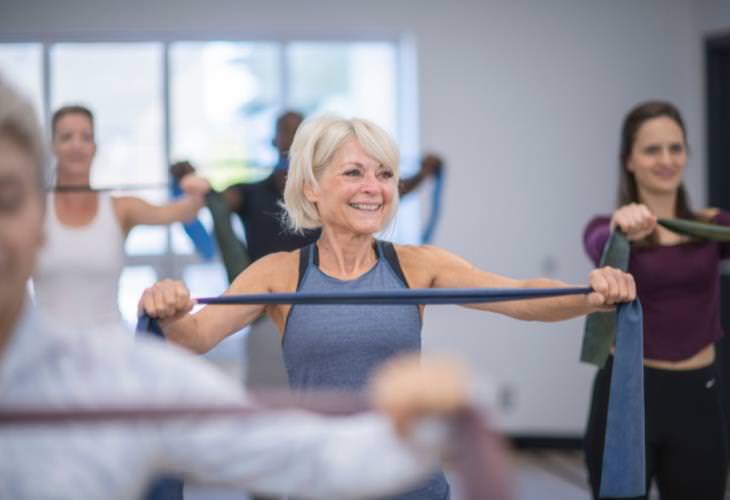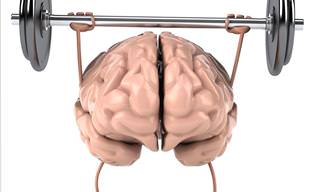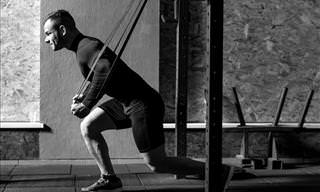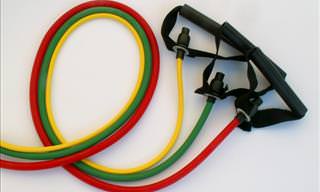One of the best advantages of having resistance bands is that they are light and small, and hence easy to store. They are also quite cheap – costing somewhere in the range of 30$. Dumbbells or a home gym machine can take up a lot of space and can also be expensive to maintain. That won’t be the case with exercise bands. Also, since they are so portable they can be used anywhere and everywhere - in your backyard, at the park, or even in your bedroom. This makes them the ideal workout tool for those seniors who may not be able to get to a gym or the ones who like to exercise from the comfort of their homes.
2. Easy on your joints
As you age, your joints may not be as good as they used to be. But you’ve still got to remain fit. This is where resistance bands are perfect as they have little risk of injury. Moreover, unlike free weights, resistance bands are not reliant on gravity and thus reduce joint compression. This will prove to be really helpful in preventing injuries on your joints in the long term. Also, since they provide flexible and variable execution of movements during an exercise, the workouts won’t be repetitive and consequently would be easier on the joints.
3. They are great for strength training
Strength training can do wonders for the body and can preserve bone density, independence, and vitality with age. Research also shows that strength training exercises can help combat weakness and frailty and their crippling consequences.
As we mentioned earlier, one of the main purposes of resistance bands is to strain your muscles and provide them with resistance. Using these bands regularly can help increase your muscle strength and even stability around the joints along with your muscle size in the areas that are being worked. Using them you can safely do a lot of strength exercises such as chest presses, rows, shoulder presses, bicep curls, and tricep extensions.
4. They increase coordination
When you stretch a resistance band, you’ll feel more and more tension in your muscles. That’s what forces your muscles to work and develop. And when you have to maintain the tension throughout each exercise routine, it gets more muscles working and helps you develop coordination and balance.
Balance and coordination are extremely important for seniors. Better coordination, for example, can help prevent falls as you roll rather than crash as you go down.
5. You can use them alone without any issue
Another great benefit of exercising with resistance bands is that you can use them alone without anybody’s assistance - your feet and hands are enough for it. On the other hand, when you are lifting weights by yourself, it can be dangerous as they can drop and cause injury. But resistance bands are perfectly safe to use by yourself and are a great one-person weight training activity for the elderly.
6. They can strengthen your bones
It is important to strengthen your bones as you age as they tend to become fragile with time and hence the risk of fracture increases. Workouts with resistance bands are a great way to strengthen your bones. Evidence also suggests that resistance training is vital for bone health in seniors. So, you can definitely try and include some resistance band exercises in your daily routine for the betterment of your bones.
The more bone mass you create through resistance band exercises, the better chances you will have at getting thicker, denser, and stronger bones. This can be essential in helping you prevent fractures or breaks due to a fall. More importantly, this can help you cope better against degenerative bone diseases in your old age.
Simple Resistance Band Workouts For Senior
As we have mentioned above, resistance bands provide a full-body workout and you can perform plenty of exercises with them to train almost any muscle in your body. Here, we will look at some easy resistance band exercises that seniors can incorporate into their lifestyles.
Chest Pull
Do this routine while you are seated or standing. This will help increase the strength in your arms and across your chest.
* Sit on a chair with your back firmly supported against it. Hold both the ends of the resistance bands on each of your hands.
* Raise your arms and keep them in line with your shoulders. Make sure they are bent at the shoulders.
* Straighten your arms and pull the resistance band towards your chest. Breathe in and out in time with every repetition.
* Whenever you feel the tension begins to get too much, release your arms back to the bent position.
* Focus on the technique rather than the speed. Keep repeating this exercise slowly and for as long as you feel comfortable.
Bent-Over Row
This exercise will help you strengthen your lower back as well as your core muscles, and shoulders. Once you start doing it regularly, it can help alleviate joint pains, particularly any you might have in your hips.
* Sit on a chair with your back firmly supported against it.
* Keep the resistance bands firmly under your feet, and hold both ends with your hands.
* Keeping your back straight, lean over, making sure that your body is almost parallel with the ground.
* Pull the resistance bands with your arms so that they are parallel with your shoulders and with your elbows raised upwards.
* Lower your arms slowly. Keep repeating as long as you feel comfortable.
Lateral Raise
This exercise works your shoulder muscles as well as your triceps. It will also help improve your posture. While this workout is best performed standing, you can also do it from a sitting position.
* With your feet firmly planted into the ground, stand over the middle of your exercise band.
* Keeping your back straight, hold both ends of the resistance band.
* Pull the resistance bands upwards by raising your arms.
* Keeping your arms level with your shoulders, lower them to your side. Keep repeating the motion as long as you feel comfortable.
Hip Abduction
This is a wonderful exercise to strengthen your hip muscles and alleviate joint pains.
* Sit on a chair with your back firmly supported.
* With your knees hip-width apart, wrap the resistance band around your knees.
* Push your knees out to the side slowly with the help of your hips and then bring them back
* Maintain an upright posture throughout. Don’t rush the exercise. Keep repeating as long you feel comfortable.
Share this article with your friends and family...
 Go to BabaMail
Go to BabaMail


